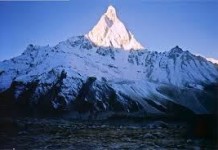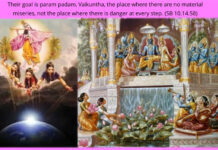Space technology has certainly become a household name in the recent days. Many nations (developed, developing and underdeveloped) possess their own Space programs and feel that they enhance their glory to the Zenith. Most countries allocate an average of 60 % of their annual budget in Space related technological and research activities. The Space programs are given a wide global publicity, giving rise to “Space Era Competition” among the nations.
In the modern times, USSR (Russia) became the first country to launch Space satellites (unmanned) and eventually sending humans into space. USA began its own space legacy by establishing NASA and launching space satellites through it and needless to say, NASA is regarded as one of the topmost space technology centre in the whole world. To name a few, we have European Space agency (ESA), Japanese Aerospace Exploration Agency (JAXA), Indian Space Research Organization (ISRO), Canadian Space Agency (CSA), and DLR by Germany etc..
By launching different satellites into outer space, the different countries are keeping an Eagle eye on the earth by continuously monitoring the various features on the planet and different harmful space weather conditions ranging from lower atmosphere (troposphere), surface of the earth, its vegetation, water resources, cyclones, tornadoes, low pressure areas in the oceans, weather forecasts etc..to ionosphere ( communication and navigation purposes used in GPS, telecommunication etc..) , magnetosphere, plasma sphere of the earth.
Now, Space Technology is being Portrayed as a boon to humanity, with promises of space life based on the concepts of space colonies, Moon and Mars explorations for resources, survival of mankind on moon, mars etc..However, Space Technology is providing least space in our personal lives, generating mechanical robotic mindsets in human beings, making them forget the real purpose of human life among the 84 lakh species of life.
 Space Technology is not considered to be new in the ancient Vedic culture. Scriptures like Srimad Bhagavatam, Vishnu purana, skanda purana,etc..Itihasaas like Ramayana, Mahabharata describes various space travels, space vehicles. Indeed many profound examples of space artifacts are found in the Vedic scriptures. Narada Muni is considered to be a spiritually blissful (not materially hectic) space traveler who travels continuously in the spiritual and material universes constantly singing the glories of the supreme lord, His name, fame, transcendental qualities etc..
Space Technology is not considered to be new in the ancient Vedic culture. Scriptures like Srimad Bhagavatam, Vishnu purana, skanda purana,etc..Itihasaas like Ramayana, Mahabharata describes various space travels, space vehicles. Indeed many profound examples of space artifacts are found in the Vedic scriptures. Narada Muni is considered to be a spiritually blissful (not materially hectic) space traveler who travels continuously in the spiritual and material universes constantly singing the glories of the supreme lord, His name, fame, transcendental qualities etc..
Indeed all the scriptures provide us with a wonderful motivation to become a spiritual astronaut and go to the spiritual cosmos to serve Krishna in Goloka (or his Narayana forms in vaikunthalokas in the spiritual cosmos). The entire 5th canto of Srimad Bhagavatam is to understand the Cosmology (Study of Universes, both Material and Spiritual). Narada Muni is certainly beyond the reach of the modern space technology. Certainly, in ancient times, there existed a spiritual harmony between Spiritual realization and material progress (in terms of dharma, artha, Kama, moksha).
featured image credit http://www.wallpaperup.com





































